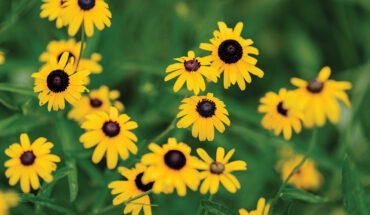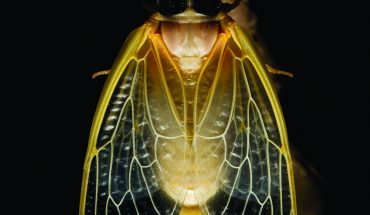 by Tony Avent
by Tony Avent
illustration by Ippy Patterson
It was early in the morning, a sunny Monday morning, when Mark Weathington of Raleigh’s J.C. Raulston Arboretum and I sped down the winding roads of Alishan mountain on the island of Taiwan, and out of the corner of my eye, I caught a glimpse of blue.
Could it be we had just found one of my favorite fall-flowering plants in its native haunt? Botanizing at 55 miles per hour is a natural gift that several of my horticultural traveling companions and I have honed over decades of plant exploration.
Slamming on the brakes would have been too dangerous, but we soon found a spot to turn around and park. No sooner had we stepped out of the van than we had a eureka moment. There it was: Tricyrtis lasiocarpa in all its glory.
I had long had a love affair with Tricyrtis lasiocarpa, even before I knew its real name. Gardeners know tricyrtis as toad lilies, but this toad lily was special to me, and had been for a while. At least three decades earlier, my friend John Elsley introduced this gem to me when he brought it to America and sold it through the Wayside catalog, where he worked at the time. He sold it under what we now know is the erroneous name of Tricyrtis formosana var. amethystina…a similar toad lily from Taiwan. It was John’s catalog photo that caught my attention at the time – the unique glowing cobalt blue on the tip of the petals, to be specific. It was unlike any toad lily I’d seen before or since.
I never got that image out of my mind, and years later, when we purchased our first house, Tricyrtis lasiocarpa was one of the first plants I acquired for my shade garden. It grew and flowered well – at least I thought it grew well, until my encounter with it in the wild. Unlike wild growing tricyrtis that I’d seen years earlier in Korea, this Tricyrtis lasiocarpa didn’t grow in the woods. In fact, it was in rock cracks on a partially sunny bank, and looked none the worse for wear.
I was able to return home with seed, and when the resulting plants were large enough, I planted them in a bed that received a few hours of morning sun. The reward next season was toad lilies unlike anything I’d grown before.
These sturdy clumps of thick, upright stems top out at three feet tall, ending with terminal sprays of one-inch, orchid-like flowers patterned with purple, white, and blue. Tricyrtis lasiocarpa is incredibly easy to grow, and once it begins flowering in mid-July, it doesn’t stop before late summer or early fall. Although it’s amazingly tolerant of adverse conditions, the most spectacular plants result from rich compost and slightly moist soils.
Speaking of which, I’d better grab the camera…it’s toad lily time.



